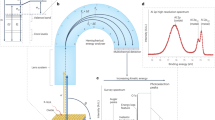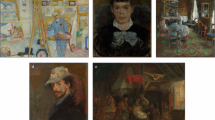Abstract
THE application of physical methods of examination to paintings has proved in recent years a very fertile field of research yielding results of considerable importance to specialists and often of interest to the general public. Ever since X-rays were first trained upon a painting, it has been recognized that under-surface structures can be revealed which may well be of interest to the student; moreover, it is often possible to assess the condition of the groundwork of the picture and so obtain an indication of its stability.
This is a preview of subscription content, access via your institution
Access options
Subscribe to this journal
Receive 51 print issues and online access
$199.00 per year
only $3.90 per issue
Buy this article
- Purchase on SpringerLink
- Instant access to full article PDF
Prices may be subject to local taxes which are calculated during checkout
Similar content being viewed by others
References
Burroughs, Alan, "Art Criticisms from a Laboratory". London: George Allen and Unwin, Ltd. (1940).
From the National Gallery. Pp. viii+50 plates (London: National Gallery, 1940). 6s. net.
Rawlins, F. I. G., Museums J., 38, 186 (1938), and Cantor Lectures, R. Soc. Arts (1937).
Author information
Authors and Affiliations
Rights and permissions
About this article
Cite this article
PLENDERLEITH, H. Application of Modern Physics in the Examination of Paintings. Nature 147, 165–166 (1941). https://doi.org/10.1038/147165a0
Issue date:
DOI: https://doi.org/10.1038/147165a0



